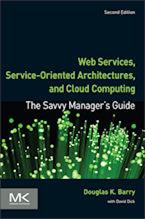Identity Service Interface Specification (ID_SIS)
The Liberty Identity Service Interface Specification (ID-SIS) used the ID-WSF and ID-FF specifications to provide networked identity services, such as contacts, presence detection, or wallet services that depend on networked identity. The SIS contained two specifications:
- Personal Profile (ID-SIS-PP): This is a Web service. It offers basic profile information regarding a Principal, including name, legal identity, and a minimal set of contact information such as legal domicile, home, and work addresses. The profile may also contain phone numbers, emails and other online contact information. Some basic demographics and presentation information and employment and public key details may also be included. An extension mechanism allows other arbitrary data to be included. An ID-SIS-PP service only stores information regarding the Principal him- or her-self and does not target contact management or e-commerce applications.
- Employee Profile (ID-SIS-EP): This is a Web service. It offers profile information regarding an employee. ID-SIS-EP provides basic employee information.
Organization: Liberty Alliance Project
Context for Identity Service Interface Specification (ID_SIS)
Related Articles for Identity Service Interface Specification (ID_SIS)
Author
Douglas K Barry
Principal
You may use this material for your work or classes. Reprint Policy. Be sure to check the menu at the left for other articles available on this site.
The Savvy Manager's Guide
Douglas K Barry is also the author of a book that explains Web Services, service-oriented architecture, and Cloud Computing in an easy-to-understand, non-technical manner.
Web Services, Service-Oriented Architectures, and Cloud Computing: The Savvy Manager's Guide (Second Edition)
by Douglas K Barry with David Dick
This is a guide for the savvy manager who wants to capitalize on the wave of change that is occurring with Web Services, service-oriented architecture, and—more recently—Cloud Computing. The changes wrought by these technologies will require both a basic grasp of the technologies and an effective way to deal with how these changes will affect the people who build and use the systems in our organizations. This book covers both issues. Managers at all levels of all organizations must be aware of both the changes that we are now seeing and ways to deal with issues created by those changes.

